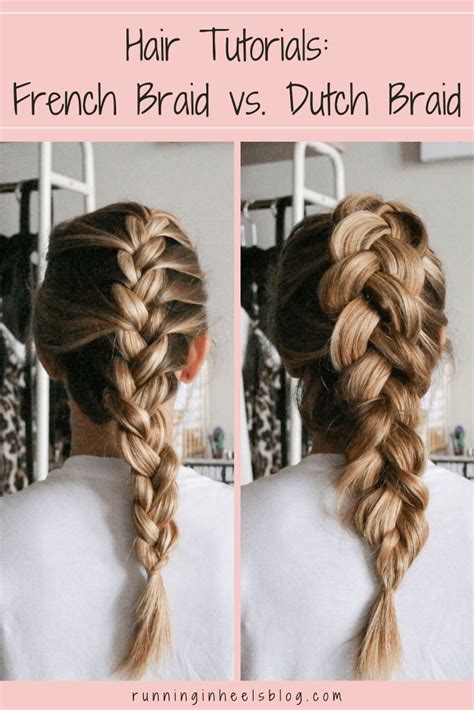Introduction
Braids are versatile hairstyles that have been around for centuries. They come in various forms, each with its unique charm and complexity. Two popular braid styles that frequently grace heads are Dutch braids and French braids. While both create eye-catching patterns, they differ in technique and overall appearance.

Dutch Braid (a.k.a. Inside-Out Braid)
- Origin: The Netherlands, hence the name “Dutch.”
- Technique: Strands are crossed over each other underneath the middle strand, creating a raised and three-dimensional effect.
- Appearance: Bold, intricate, and stands out from the scalp.
- Benefits: Adds volume, conceals hair roots, and provides a secure hold for long periods.
French Braid (a.k.a. Outside-In Braid)
- Origin: France, as its name suggests.
- Technique: Strands are crossed over each other outside the middle strand, resulting in a flat and intricate pattern.
- Appearance: Elegant, sophisticated, and blends into the hair.
- Benefits: Smooths flyaways, creates a polished look, and can be embellished with hair accessories.
Key Differences:
| Feature | Dutch Braid | French Braid |
|---|---|---|
| Direction of Crossing | Underneath | Outside |
| Appearance | Raised, 3D | Flat, 2D |
| Volume | Adds volume | Blends into hair |
| Hold | Secure | Less secure |
Which Braid Style Is Right for You?
The choice between a Dutch braid and a French braid depends on your personal preferences and hair type.
- Dutch braids: Ideal for those who want to add volume, conceal hair roots, or create a bold and eye-catching look.
- French braids: Perfect for those who prefer a sleek and elegant hairstyle, want to smooth flyaways, or plan to embellish the braid with accessories.
Creative Applications of Braids
Beyond traditional hairstyles, braids can be incorporated into various applications:
- Jewelry: Intricate braids can be used to create unique necklaces, bracelets, and earrings.
- Art: Braids can be woven together to form intricate patterns or sculptures.
- Fashion: Braids can add texture and interest to clothing, such as belts, scarves, and bags.
- Home Decor: Braided rugs, wall hangings, and baskets add warmth and charm to living spaces.
Tips and Tricks for Perfecting Your Braids
- Practice makes perfect: Experiment with different braiding techniques to find the one that works best for you.
- Use a mirror or ask for help: A mirror can help you see what you’re doing, while a friend or stylist can provide an extra set of hands.
- Moisturize your hair: Slightly damp hair is easier to braid and will reduce tangles.
- Secure properly: Tie off braids tightly with hair ties to prevent them from unraveling.
- Experiment with accessories: Add flair to your braids by incorporating ribbons, flowers, or beads.
Step-by-Step Guide to Braiding
Dutch Braid
- Part your hair down the middle.
- Take a small section of hair from the left side of your head and divide it into three strands.
- Cross the right strand over the middle strand.
- Cross the left strand over the new middle strand (which was previously the right strand).
- Take a small section of hair from the outside of your head and add it to the left strand.
- Repeat steps 3-5, alternating sides until you reach the end of your hair.
- Secure the braid with a hair tie.
French Braid
- Start with a small section of hair at the crown of your head.
- Divide it into three strands.
- Cross the right strand over the middle strand.
- Cross the left strand over the new middle strand.
- Take a small section of hair from the outside of your head and add it to the right strand.
- Repeat steps 3-5, alternating sides until you reach the end of your hair.
- Secure the braid with a hair tie.
Conclusion
Whether you opt for the bold and voluminous Dutch braid or the sleek and elegant French braid, both braiding techniques offer a versatile and stylish way to enhance your hairstyle. By understanding the key differences, embracing creative applications, and perfecting your technique, you can create stunning braids that will turn heads and complement any occasion.
